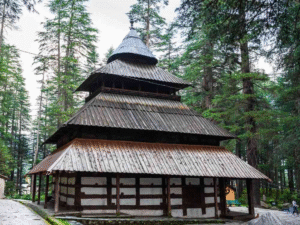Imagine walking into a place where time seems to stand still, where you can almost hear the whispers of the past and see history come alive through vibrant murals and stunning architecture. That’s exactly what you’ll find at the Ajanta Caves India, one of India’s most incredible wonders. Whether you’re into art, history, or just want to explore something truly unique, the Ajanta Caves offer an unforgettable experience that connects you to an ancient world.
These caves aren’t just about old temples; they are a testament to the creativity and faith of the Buddhist monks and artists who lived there centuries ago. From beautiful murals to impressive sculptures, the Ajanta Caves give you a glimpse into India’s artistic and spiritual soul. Ready to take a closer look? Let me take you on a journey to explore the magic of the Ajanta Caves India.
1. History and Significance

The Ajanta Caves are over 2,000 years old, and their history is as fascinating as the caves themselves. But how did these caves come to be, and why are they so important?
Origins and Discovery
The story of the Ajanta Caves goes back to the 2nd century BCE, when they were carved out as monasteries for Buddhist monks to meditate and live in. They were abandoned for centuries, only to be rediscovered in 1819 by a British officer named John Smith. Since then, they’ve become one of the most famous historical sites in India, and today, they are a UNESCO World Heritage Site.
Cultural and Religious Importance
The Ajanta Caves are more than just a place to visit—they hold deep religious and cultural significance. The walls are covered with paintings that tell stories from the Jataka Tales, which are stories about the Buddha’s past lives. These paintings were used to teach moral lessons to the people who visited the caves. It’s incredible to think that these stories are still alive in the caves, even after all these years.
official site : https://www.indiaculture.gov.in///ajanta-caves
2. Architectural Marvels

When you visit the Ajanta Caves, the architecture will leave you speechless. It’s hard to believe that these stunning rock-cut structures were created using only basic tools. The skill and creativity of the builders are truly amazing.
Structure and Layout
The caves are carved into the side of a mountain and form a horseshoe shape along the Waghora River. The layout is both practical and spiritual, with two types of caves:
- Viharas: These are the monasteries where monks could meditate, study, and live.
- Chaityas: These are the prayer halls where people would gather for worship and spiritual activities.
Each cave was carefully designed to use natural light and air, creating a peaceful and calm environment for those who lived and prayed there.
Rock-Cut Architecture
The rock-cut architecture of the caves is mind-blowing. The builders carved out multi-story structures, columns, and intricate arches from solid rock—all without the advanced tools we have today. It’s incredible to think about how much skill and effort went into creating these caves.
Official site : https://maharashtratourism.gov.in/tourist-intrests/caves/
3. Artistic Brilliance

The Ajanta Caves are famous for their murals and sculptures, which are some of the best examples of ancient Indian art. The Jataka Tales come to life in colorful paintings, showing the Buddha’s past lives and teachings.
Murals and Frescoes
The murals in the caves are absolutely stunning. The artists used natural pigments mixed with egg and water to create bright, detailed paintings. The murals show scenes from the Buddha’s life and the Jataka Tales. It’s amazing to see how vibrant and detailed these paintings are, even after thousands of years.
Symbolism and Influence
The art in the Ajanta Caves isn’t just beautiful—it also has deep meaning. The paintings reflect the Buddha’s teachings of compassion, wisdom, and kindness. The Ajanta Caves India influenced many other cultures, and you can see their impact in art across China, Japan, and other parts of Asia. This is a place where art, culture, and spirituality come together in a way that’s still inspiring today.
4. Key Caves to Explore

There are over 30 caves at Ajanta, and while every single one is unique, some really stand out. Here are a few that you definitely don’t want to miss:
Cave 1: A Masterpiece
Cave 1 is considered the most impressive of all the caves. It features incredible murals that tell the story of the Buddha’s life, and the atmosphere inside is truly peaceful. The sculptures and paintings here are some of the most well-preserved and beautiful in the entire complex.
Cave 2: Artistic Elegance
Cave 2 is another favorite. This cave is filled with vibrant frescoes that depict stories from the Jataka Tales and the Buddha’s life. The colors and details in the paintings are amazing, and the sculptures create an atmosphere that makes you want to stay and reflect for a while.
Caves 16 and 17: Artistic Jewels
Caves 16 and 17 are known for their large Buddha sculptures and breathtaking murals. These caves showcase the incredible craftsmanship of ancient artists and give you a glimpse into Indian art during the Gupta period. If you love art and history, these caves are essential stops on your journey.
5. Planning Your Visit
If you’re planning to visit the Ajanta Caves, here’s everything you need to know to make your trip easier and more enjoyable.
Best Time to Visit
The best time to visit is between October and March when the weather is cooler and more comfortable. The summer months can be really hot, so it’s best to visit when the temperatures are more pleasant.
How to Get There
The Ajanta Caves are located near Aurangabad in Maharashtra, India. Here’s how you can get there:
- By Air: You can fly into Aurangabad and then take a taxi to the caves.
- By Train: Aurangabad is well-connected by rail, so you can take a train to reach the city.
- By Road: You can also take a bus or hire a taxi from Aurangabad to the caves.
Nearby Attractions

If you have time, don’t miss the Ellora Caves, which are not far from Ajanta. These caves offer a completely different experience and showcase a blend of Hindu, Buddhist, and Jain art and architecture. It’s worth visiting both if you can.
The Ajanta Caves are more than just a historical site—they are a window into the past, offering you a chance to experience the art, culture, and spirituality of ancient India. From the vibrant murals to the breathtaking architecture, every part of the caves tells a story of creativity, faith, and devotion.
If you’re ever in India, don’t miss the chance to visit the Ajanta Caves India. It’s an experience you won’t forget, and it’s one that connects you to a world long gone, yet still so alive.
















2 Responses